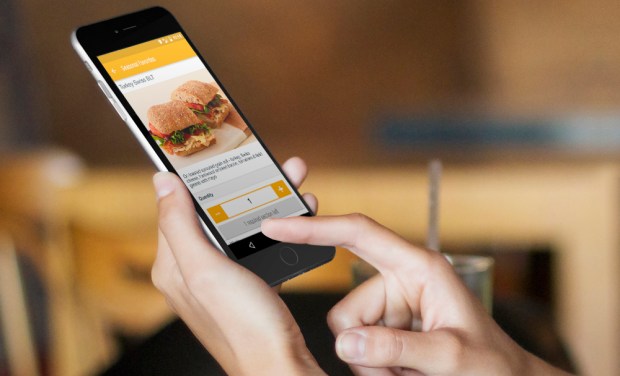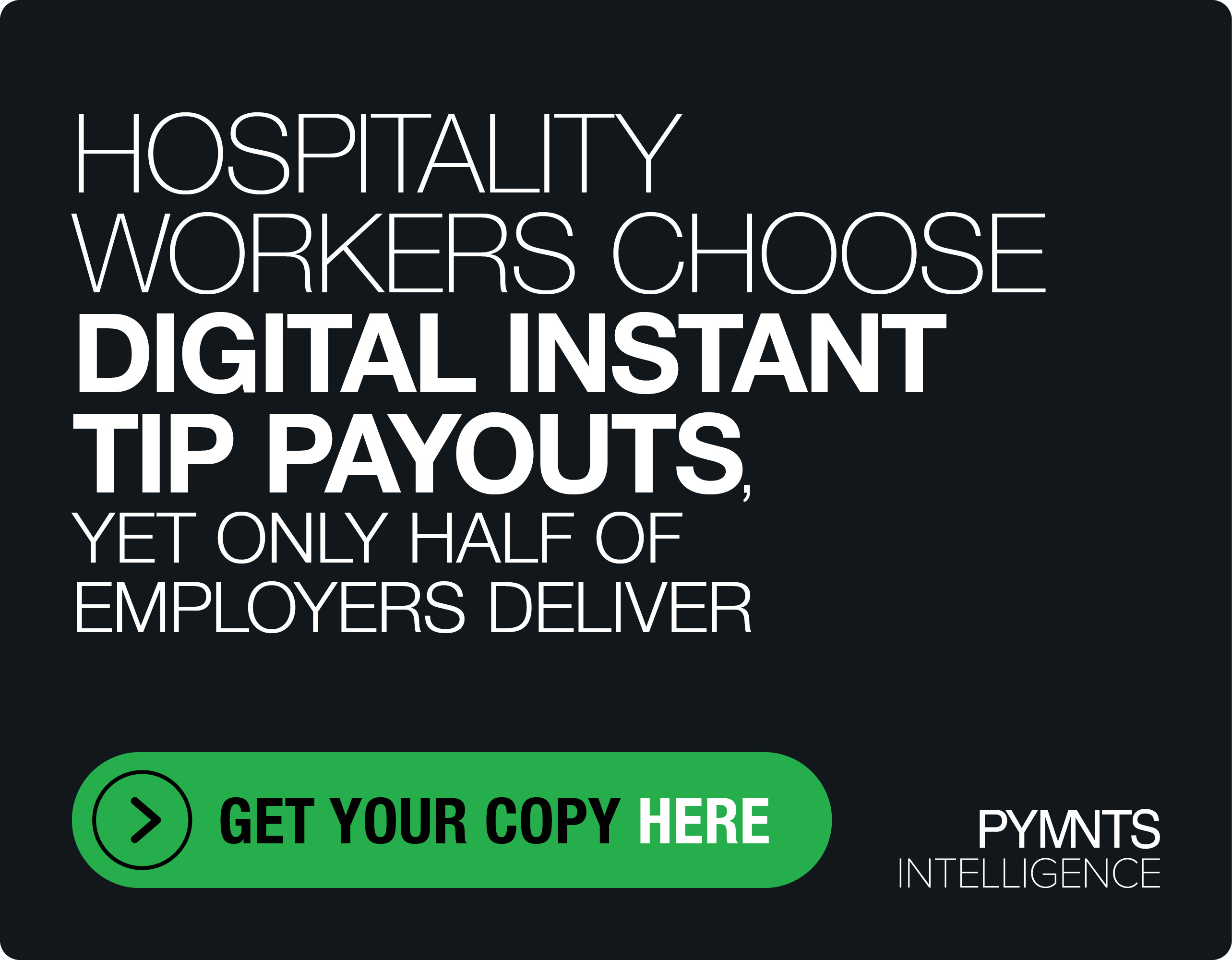Au Bon Pain & The Devil In The Mobile Order-Ahead Details

Being a first mover isn’t always what it’s cracked up to be.
Nearly half — 47 percent to be precise — of first movers fail. Friendster was hot until Facebook became hotter. Netscape was too until Internet Explorer crashed their internet browser party. There was Palm until the Blackberry, and later the iPhone, crashed their PDA party.
But in their wake are the fast followers who watch these leaders open markets, prove the demand and then jump in with solutions that address some of the vulnerabilities that these first movers inevitably encounter.
In some ways, Au Bon Pain Vice President of Strategic Operations, Walter Erwin, told Karen Webster, that’s a little bit of their story too, when it comes to mobile order-ahead. In some ways, jumping into the mobile order ahead fray some two-plus years after Starbucks and Taco Bell kicked open that market, Erwin said, has given them insights about the finer points of mobile order-ahead that need attention, which they had time to address with their solution.
“We really started to look around two and half years ago and realized that customers wanted the kind of convenience and speed of service we are able to offer with ABP Pickup,” Irwin said, “but we were really held back by an archaic POS system that just couldn’t support these kinds of capabilities.”
A two-and-a-half-year POS upgrade project and a partnership with Olo later, and Au Bon Pain (ABP) is rolling out its mobile order ahead solution, starting in Massachusetts, with what Erwin says is an very tailored suite of services for its customers.
So what does Erwin believe that the chain has learned from its two-plus years of watching those mobile order-ahead first movers open the market?
Keeping the Backend Front and Center
While mobile order-ahead has some common features whenever and wherever it’s offered, the common denominator always involves skipping a line to order food and walking in and grabbing and going with one’s order already made.
But making that happen requires paying attention to the many details that can bedevil a great customer experience.
Beginning with having a solid grasp on what’s on the menu and when it might not be available.
“As a bakery and café, throughout the day things will sell out. So our order-ahead system has to be very focused on managing our menu offering in real time,” Erwin explained, “because we don’t want a customer to come in and think they’re picking up their favorite bagel or scone and be told by the manager on duty that it’s sold out — so they’ll have to wait in line to get something else.”
That means that the ABP system must be able to recognize when an item is sold out or will be based on other orders in the queue and let the customer know that before she finalizes her order — and pays. Apart from heading off a disappointment at pick-up, it gives Au Bon Pain a chance to complete the conversion by offering the customer an acceptable substitution while she’s in the moment of placing her order.
Another important detail, Erwin said, is making sure that the online ordering experience is consistent with the in-store experience. Erwin explained that when a promotional offer is on the menu in the store — say, a $0.99 coffee with a breakfast sandwich or a half-priced soup special to go with a lunch order — that same promotion must also appear on the order-ahead menu.
Erwin said that it also means that sandwich station printers are always working, because if the mobile orders aren’t visible to the store staff, they don’t get fulfilled. And making sure that things like paper products and plastic cutlery are well stocked and placed in the bag for the convenience of that consumer.
For Erwin and his ABP team, getting mobile order-ahead right was much more than making sure the product quality was good, which consumers already know and trust it will be — it’s everything else.
“When a customer is picking up their order and it’s in the bag, they’re literally grabbing it and going,” Erwin said. “So, it’s not until that consumer gets back to her office and sits down to eat that she realizes she doesn’t have a napkin, or she has a soup and a fork, but no spoon. Or that she brought back five soups for her colleagues and has only three spoons. It’s all really simple stuff, but it is the simple stuff that can kill you with customers.”
But the number one killer, Erwin told Webster, is timing. Said simply — first and foremost, he’s learned by watching all of those first movers, that you just can’t make the customer wait.
Timing Is Everything
The point of mobile order-ahead, Erwin noted, fundamentally centers on saving time and delivering massive convenience. So when time is no longer being saved, mobile order-ahead loses a lot of its luster pretty fast.
Which means the biggest challenge ABP must address is managing store operations to deliver that order in the time window they’ve given to that consumer. Miss that scheduled time and make the customer wait for her order, and Erwin said that you’ve totally defeated the purpose of using the channel.
Erwin explained that takes doing a lot of time studies in order to understand how to throttle down order-ahead capacity during early morning peak times, for example, to make sure they are always staying within the capacity of what they can fulfill in the time promised.
“That means sometimes guests can’t get an order 15 minutes from ‘right now’ — or that they may have to accept a later pick-up time that they don’t want,” he said, continuing that it’s far better to be honest up front and manage consumer expectations — even if it means losing the order — than delivering a bad guest experience.
Erwin and his team have also spent a good deal of energy reducing the art of food preparation to an exactly timed-out science, so they can offer guests more “ASAP” choices and more accurate estimates of exactly how long an order will take.
“We really have an ability to understand things like how many hot sandwiches we can make in 15 minutes, for example — and to run that kind of figure through a calculation across all of our food categories so we can compute almost exactly how long it will take to make an order.”
All of this is important, he noted, because at this point in the mobile order-ahead game, they need to work harder to displace one of the five or so apps offering a competing service at lunchtime. Erwin said he believes they can, but only if ABP’s version of mobile order-ahead comes with a level of precision that an attention to operational excellence makes possible.
“If you come into the party later and then don’t actually deliver for people — that is much too high a hurdle to clear. We want … our guests to say from the first time they use it, ‘You know, I had a good experience here, I am going to do that again.’”
